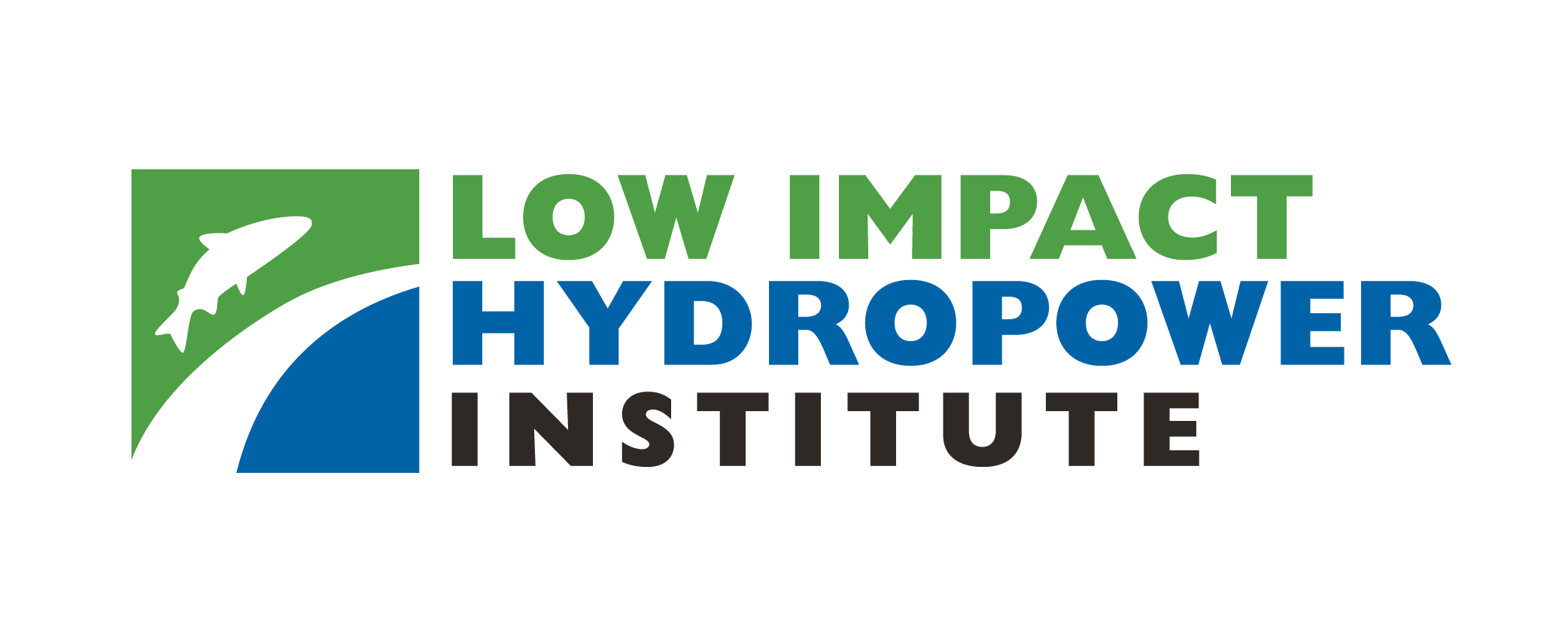术语表
一个
邻接: 山谷边缘上修建大坝的部分。有时在没有合适的天然桥台的地方会修建人工桥台。右桥台和左桥台是观察者从下游看时分别位于观察者两侧的桥台。泄洪道或闸门结构与堤坝之间的墙也可以称为桥台。
适应性管理计划: 一套管理实践系统,以明确确定的时间框架和结果为基础,通过监测来确定管理行动是否符合结果,如果没有,则促进管理变革,以确保及时实现结果或重新评估结果。适应性管理认识到,关于自然资源系统的知识有时是不确定的,因此在这些情况下,适应性管理是首选的管理方法。
曝气器: 强制空气系统用于对发电站下游释放的水进行重新充气。
安伯森大坝: 一种支墩坝,其上游部分是相对较薄的平板,通常由钢筋混凝土制成。
溯河洄游鱼类: 鱼的生命周期始于淡水,然后以幼鱼身份迁徙到海洋,在那里长大成鱼,然后再迁回淡水产卵。
斜角杆架: 斜角栅栏和百叶窗用于引导下游迁徙的鱼类流向旁路和泄水道,而不是通过水电站。这些结构引导系统不会从物理上将鱼类排除在发电站进水口之外,而是在结构前创造水力条件,以阻止鱼类进入进水口。
附属设施: 指变电站、输电线路等水电设施的非整体部分。
拱坝: 一种混凝土、砖石或木结构大坝,其轴线向上游弯曲,以便将大部分水负荷传递到桥台。这种大坝类型类似于重力结构,但拱坝利用狭窄的上游曲线将水压引导到海岸线上,提供压缩和维持大坝强度的力量。
景点流程: 在鱼道上游或下游入口处供应的辅助水,可产生足够强的水力信号,使鱼能够感知到鱼道路线并及时通过,从而避免不必要的延误、疲劳、受伤和/或死亡。
轴流涡轮机: 水流方向与涡轮轴平行的涡轮机。
乙
开合门: 用于调节水坝水流量的可调节闸门。这种闸门降低时打开,升高时关闭。
基流(水生基流): 水生基流这一术语由美国鱼类和野生动物管理局创造,用于描述一组化学、物理和生物条件,这些条件代表了溪流环境中水生生物和野生动物的限制条件。从水文角度来说,它是指美国鱼类和野生动物管理局计算出的 8 月中值流量。
流域规模(或流域范围): 流域规模或流域范围涵盖在河流及其支流流经的土地区域内发生的活动。
浴缸溢洪道: 双侧槽溢洪道。
护堤: 堤坝斜坡剖面中近乎水平的台阶。也指岩石或土方开凿的台阶。
分叉: 分成兩個分枝。
布鲁姆门: 一种安装在滚轮上的垂直升降门,两侧均由不锈钢滚轮链支撑。
棕地: 由于存在或潜在存在危险物质、污染物或污染物,其扩建、再开发或再利用可能会变得复杂。
灯泡式涡轮机: 轴流式螺旋桨涡轮机,其中涡轮机和发电机是一个密封单元,直接放置在水流中。
蝶阀: 一种阀门机构,通过阀盘的四分之一圈旋转来调节大管径内材料的流动。蝶阀是一种四分之一圈阀门。它的工作原理与球阀类似,可快速关闭,但与球阀不同的是,蝶阀还可以逐步打开和关闭。这种差异意味着阀盘始终存在于流体中,并允许压力下降。
支柱坝: 钢筋混凝土支撑结构通过单独的支撑基础将水负荷转移到地基岩石,利用蓄水的重量和结构的重量来抵抗滑动和倾覆。
旁路: 穿过或绕过水坝的渠道或管道,用于提供河水流量以及供鱼类通过的路线,而无需经过涡轮机组。
绕过范围: 水道中,通过涡轮机或其他机械方式将水引向水力发电的初始点,与水被释放到涡轮机或其他机械发电方式下方的水道中的点之间的区域。
碳
运河: 一种人工建造的明渠,通常用于将水从水库输送到发电站。
降水洄游: 鱼类的生命周期始于海水,幼鱼迁徙至淡水,长成成鱼后再迁回海洋产卵。美洲鳗是北美洲唯一的降水洄游鱼类。
CERCLA(超级基金法案): 《综合环境反应、补偿和责任法案》(CERCLA),通常称为“超级基金”,由国会于 1980 年 12 月 11 日颁布。该法律对化学和石油工业征税,并赋予联邦政府广泛的权力,以直接应对可能危害公众健康或环境的危险物质的排放或威胁排放。
保护地役权: 土地所有者与土地信托或政府机构之间自愿达成的法律协议,永久限制土地的使用,以保护其保护价值。土地所有者保留许多权利,包括拥有和使用土地、出售土地和将其传给继承人的权利。
消耗性取水量: 因蒸发、工厂和工业过程而损失的水量。
顶门: 泄洪道顶部的闸门,用于控制泄洪或水库水位。这些闸门底部装有铰链,可通过从垂直旋转到水平来打开。
横流涡轮机: 横流式涡轮机呈鼓形,使用细长的矩形截面喷嘴,喷嘴朝向圆柱形转轮上的弯曲叶片。横流式涡轮机允许水流过叶片两次。第一次通过时,水从叶片外部流向内部;第二次通过时,水从内部流回外部。涡轮机入口处的导叶将水流引导到转轮的有限部分。
德
坝: 用于阻挡水、废水或任何液体物质的屏障,用于储存或控制水。
滴滴涕: 二氯二苯三氯乙烷是 20 世纪 40 年代开发的第一种现代合成杀虫剂。它最初在军人和平民中用于对抗疟疾、斑疹伤寒和其他昆虫传播的人类疾病,效果显著……美国农业部在 20 世纪 50 年代末和 60 年代开始采取监管行动,禁止使用 DDT,因为越来越多的证据表明这种杀虫剂的效益正在下降,并且对环境和毒理学有影响。1972 年,美国环保署发布了 DDT 的取消令,理由是 DDT 对环境有不利影响,例如对野生动物的影响,以及对人类健康有潜在风险。此后,研究仍在继续,根据动物研究,人们怀疑 DDT 暴露与人类生殖影响之间存在关联。
特拉华式鳗鱼梯: 通过在水坝顶部附近的挡水板、水面闸门或其他结构上开一个洞来建造一条上游鳗鱼通道。通过将拖网或类似的绳状材料穿过洞(并可选地套上一段 PVC 管来控制水流),为鳗鱼越过水坝创建一条粗糙的路线。
丹尼尔风格鱼道: Denil 设计是一系列挡板式滑槽梯子,利用粗糙元素(即挡板)来消散水流经水槽的动能,为洄游鱼类创造一个低速通道区。
海洄游动物: 洄游鱼类是描述生命周期中一部分在淡水中,一部分在咸水中度过的鱼类的一般类别。这些鱼类既包括溯河洄游鱼类,也包括降河洄游鱼类。
二恶英: 二恶英是指一组具有某些共同化学结构和生物特性的有毒化合物。二恶英毒性极强,可导致癌症、生殖和发育问题、免疫系统受损,并可干扰荷尔蒙。
导流: 通过运河、管道、水井或其他管道将溪流、湖泊、含水层或其他水源的水转移到另一条水道或陆地,例如灌溉系统。
引水坝: 为将一条水道或溪流的水转移到另一条水道而建造的水坝。
双曲拱坝: 垂直和水平方向均弯曲的拱坝。
导流管: 将水从水轮机转轮输送到尾水的管道。设计用于最大程度提高水头和发电量。
埃
土坝: 总体积的 50% 以上是由压实土层构成的土石坝,这些土层通常小于 3 英寸。
鳗鱼梯/鳗鱼坡道/鳗鱼道: 倾斜的水槽,水从水坝上方流向下方,鳗鱼利用该水槽爬上水坝。
土石坝: 通过放置和压实由各种成分的土壤、沙子、粘土和/或岩石组成的复杂半塑性土堆而形成的巨大水坝,通常具有致密的不透水核心。
夹带: 无意中被吸入发电站进水口结构并穿过涡轮机的鱼。
基本鱼类栖息地: 根据《马格努森-史蒂文斯渔业保护和管理法》,EFH 适用于联邦管理的物种。EFH 包括这些受管理鱼类产卵、繁殖、觅食或成长的所有类型的水生栖息地。
河口: 淡水与咸水交汇的区域。高生产力的生态系统。
豁免: 豁免是指对环境影响有限且符合某些标准的小型水电项目,因此根据《联邦电力法》第一部分可免于许可。豁免是永久性的,包括州和联邦鱼类和野生动物机构规定的强制性环境条款和条件。
已拔除: 从设施受影响的区域中彻底清除或局部消灭某个物种种群。
弗
虚假吸引力流: 水流或湍流妨碍了鱼找到上游或下游鱼道的能力。涡轮机排放流、大坝溢流或大坝闸门的运行都可能导致假引流。
动物: 某个地区或栖息地的动物种类。
联邦能源管理委员会: 联邦能源管理委员会 - 负责监管和监督州际天然气、石油和电力输送以及天然气和水电项目的独立联邦机构。
鱼类通道: 鱼类安全有效地沿人工障碍物上游和下游移动的能力。
鱼屏: 安装这种屏障是为了将鱼从运河或发电站的进水口或出水口转移出去。
鱼道: 鱼类穿越障碍物所必需的要素(结构、设施、设备、操作和措施)的组合。
闪光板: 放置在水渠中或泄洪道顶部的木材、混凝土或钢结构构件,用于提高水库水位,但旨在发生洪水时快速移除、绊倒或损坏。
闸: 控制水库泄洪的闸门。
洪泛平原森林: 洪泛平原森林通常出现在河流沿岸低洼且易发生洪泛的地区,通常高出河道 20 英尺以下。它们通常与牛轭湖(与河道分离的水池)、夏季干涸的临时湿地(春池)、长满草和野花的开阔草地以及茂密的灌木丛有关。
洪泛区: 洪泛平原是指河流或溪流旁的一块平坦土地。
植物: 特定地区或栖息地的植物种类。
流动持续时间曲线: 流量持续时间曲线是一种图表,显示河流流量可能等于或超过某个指定值的时间百分比。例如,它可用于显示河流流量预计超过某个指定值(例如 20 cfs)的设计流量的时间百分比,或显示发生或超过一定时间百分比(例如 80% 的时间)的河流流量。
水槽: 一种人工结构,用于输送水,其形式为开放式、倾斜的重力溜槽,其壁高于周围地形。
前池: 位于水坝或水电站进水口结构上游的蓄水池。
弗朗西斯式涡轮机: 弗朗西斯式水轮机是一种反作用式水轮机,也就是说,它通过压力和流动的水的共同作用来产生动力。转轮直接置于水流中,因此水流过叶片而不是单独撞击每个叶片。弗朗西斯式水轮机的转轮上通常有九片或更多片固定叶片。水从转轮正上方和周围引入,然后从转轮周围落下,使叶片旋转。除了转轮外,其他主要部件还包括蜗壳、导叶门和引水管。弗朗西斯式水轮机是第一台现代水力涡轮机,由英裔美国工程师詹姆斯·弗朗西斯于 1848 年发明,并首次用于马萨诸塞州的洛厄尔水电项目 (LIHI #142)。
弗雷希特: 春季积雪和冰融化并在短时间内流入水体。
格
门: 通常位于水坝或运河上的一种结构,打开时可让水通过。
州长: 通过控制导叶角度来测量和调节涡轮机转速以调节流向涡轮机的水流量的装置。
重力坝: 由混凝土或石砌体构成,主要利用水坝本身的重量来抵抗水坝对其施加的水平压力,从而阻挡水流。
赫
头: 水头是水利枢纽工程上游(水库)与下游(尾水)水面高程之差,为落水提供能量。
主门: 控制流入运河、水闸或发电站进水口的水量的闸门。
源头: 河流或溪流的初始源头。
螺旋: 螺旋。
空心重力坝: 大坝外部由混凝土和/或砖石建造,但内部是空心的,依靠其重量保持稳定性。
水力填筑坝: 用通常疏浚过的材料建造的土坝,通过悬浮在流水中的方式输送和放置。
我
撞击: 由于水流速度过快,鱼无法游走,从而与进水结构(如拦污栅或鱼栅)发生物理接触。
扣押: 通过建造障碍物(如水坝和导流设施)形成的水体。通常用于指径流设施。
充气闸板: 固定在水坝顶部的充气结构,用于管理蓄水水位。
流入: 特定时间段内流入水库或前池的水的速率或水量。
河道内流量增量方法: 一种基于科学的栖息地评估技术,是一种定量的环境评估程序,描述栖息地的数量和质量如何随一系列物理条件(例如溪流或蓄水池表面高度)而变化。该术语指的是相对大量的评估方法。这些技术最重要的方面是它们涉及一个分析框架,该框架考虑了多个生态过程和资源管理目标之间的权衡,并评估了一系列水文条件下的流动选项。
河道内流量: 溪流中维持水生生物、水质、消费用途或娱乐所需的水量和水位,与其他常用术语如“环境”流量和“生态”流量同义。
摄入量: 通向管道/压力水管的结构。可与发电站集成,将水引至涡轮机。
钾
卡普兰涡轮机: 卡普兰涡轮机是一种反作用螺旋桨式涡轮机,利用压力和流动水的合力发电。转轮直接置于水流中,使水流过叶片而不是单独撞击每个叶片。在卡普兰涡轮机中,叶片和导叶门都是可调节的,允许更广泛的操作范围。这种涡轮机是由奥地利发明家维克多·卡普兰于 1919 年发明的。
大号
泄漏流量: 水通过水坝或引水建筑物的孔洞或裂缝,或者通过挡水板而不受控制地流失。
沿海地区: 水体中靠近海岸的区域,阳光可到达其中的沉积物,支持水生植物的生长。
负载跟踪: 根据电力需求,全天调整发电量。
百叶架: 水电站使用斜角栅栏和百叶将鱼引导至旁路和泄水道。这些结构引导系统并不是从物理上将鱼排除在进水口之外,而是在结构前创造水力条件,将鱼从进水口转移出去。
米
砌石坝: 主要由石头、砖块或混凝土块建造并用砂浆砌筑的大坝。只有砖石饰面的大坝不应称为砖石坝。
最小流量: 为满足环境或其他非电力用水要求,项目必须释放的最小流量。流量被释放到旁路河段或项目下游。
协议备忘录: 协议备忘录——双方为就商定的项目进行合作或实现商定的目标而撰写的文件。
谅解备忘录: 谅解备忘录——描述双方双边协议的文件。
多拱坝: 由一系列上游面拱门组成的支墩坝。
否
国家大地测量垂直基准: NGVD - 垂直基准面是零海拔表面,各点的高度以此为参考。1929 年的 NVGD 一直沿用到 1992 年,被 1988 年的北美垂直基准面取代,适用于美国本土和阿拉斯加。
国家史迹名录: 国家历史遗迹名录是美国值得保护的历史遗迹的官方名单。美国国家公园管理局的国家历史遗迹名录由 1966 年《国家历史保护法》授权,是一项国家计划的一部分,旨在协调和支持公共和私人部门为识别、评估和保护美国历史和考古资源所做的努力。
仿自然鱼道: 仿自然鱼道模仿自然侧水道,并设置在洄游屏障旁。它们包括各种各样的设计,如阶梯式水池、粗糙斜坡、岩石拱形急流、岩石浅滩和横叶,这些设计通常由巨石、鹅卵石和其他天然材料构成,以创造不同的物理和水力条件,为多种洄游鱼类和留鱼提供高效通道。
天然气车辆诊断系统 (NGVD): 国家大地测量垂直基准 - 垂直基准是零海拔表面,各点的高度以此为参考。1929 年的国家大地测量垂直基准一直沿用到 1992 年,被 1988 年的北美垂直基准取代,适用于美国本土和阿拉斯加。
非专利开发标准(NPDES): 国家污染物排放消除系统许可证计划通过监管向美国水域排放污染物的点源来解决水污染问题。水电项目通常拥有 NPDES 许可证,用于冷却水和工业废水系统的非发电排放。
营养负荷: 一段时间内进入系统的营养物质的量。系统中营养物质的超载会导致水体富营养化,从而引起藻类的过度生长。
哦
奥吉: 形状像拉长的 S 的双曲线,通常与具有最佳溢流特性的溢洪道配置相关。
出路: 为了特定目的,水可以通过一个开口从水库自由排入河流。
出料口: 控制水库出口水流量的闸门。
溢流坝: 设计为可溢流的大坝。
牛轭湖: 牛轭湖湿地是溪流、河流或小溪的蜿蜒部分,与水流分离。牛轭湖湿地储存了可能导致洪水的多余水,过滤水以改善水质,并为各种野生动物提供栖息地。
磷
PCB: 多氯联苯是一类由碳、氢和氯原子组成的人造有机化学物质。多氯联苯一旦进入环境,就很难分解。它们可以在空气、水和土壤之间循环很长时间。它们还会被小生物和鱼类吸收。因此,食用鱼类的人可能会接触到在他们所食用的鱼体内生物累积的多氯联苯。
峰值: 调峰项目是将水储存在水库中直至需要时,通过涡轮机释放水来发电,满足峰值负荷需求的项目。
佩尔顿式水轮机: 佩尔顿式水轮机是一种冲击式水轮机,这意味着它通常利用水流速度来推动转轮。水流冲击转轮上的每个水斗。水轮机下侧没有吸力,水冲击转轮后从水轮机外壳底部流出。冲击式水轮机通常适用于高水头、低流量应用。
压力钢管: 一种封闭的管道状结构,将水从水库前池直接输送到发电站。
小型游泳池: 天然或人工建造的水池,用于消散自由落体水的能量。
点源: 任何排放污染物的单一可识别污染源,例如管道、沟渠、船舶或工厂烟囱。
多环芳烃: 多环芳烃 (PAH) 是一类由 100 多种不同的化学物质组成的物质,是在煤炭、石油和天然气、垃圾或其他有机物质(如烟草或炭烤肉)不完全燃烧过程中形成的。
洄游性: 洄游鱼类完全在淡水中游动并完成其生命周期。
动力源: 包含涡轮机、发电机和相关设备以生产电力的结构。
主要联络人休闲娱乐: 可能摄入大量水的娱乐活动。例如游泳、冲浪等。
可编程逻辑控制器: PLC(可编程逻辑控制器)是一种用于工业自动化的数字计算机,可自动执行不同的机电过程。在水电站,PLC 通常用于监测和控制蓄水水位、最小流量释放、涡轮机运行和闸门运行等关键功能。
螺旋桨涡轮: 一种反作用式涡轮机(利用压力和流动水的合力发电)。螺旋桨涡轮机通常有一个带有三到六个叶片的转轮。水以恒定的压力不断接触所有叶片。叶片的螺距可以是固定的,也可以是可调的。除了转轮外,主要部件还有蜗壳、导叶门和引水管。螺旋桨涡轮机有几种不同的类型,包括卡普兰涡轮机、球状涡轮机、横流涡轮机和管状涡轮机。
目的: 1978 年《公共事业监管政策法案》是在 20 世纪 70 年代能源危机之后颁布的,旨在鼓励热电联产和可再生资源,促进发电竞争。该法案规定电力公司必须购买热电联产设施和小型发电设施(称为“合格设施”)生产的电力。
R
径流涡轮机: 一种水流垂直于轴的涡轮机。
弧形门: 具有弯曲上游板和径向臂的闸门,该闸门铰接在桥墩或其他支撑结构上。
记录: 可再生能源信用是一种基于市场的工具,代表可再生电力发电的环境、社会和其他非电力属性的财产权。
调节坝: 水坝拦蓄水库中的水,以受控方式释放水来调节流入水量,然后将其排到下游。
水库: 水坝拦蓄的水体,可用于储存水。通常用于指代储存和释放设施。
步枪: 浅滩是溪流或河流中较浅、流速较快的部分。
河岸: 河岸带是与溪流和河流接壤的陆地区域,形成水生系统和陆地系统之间的过渡区。当河岸带完好无损并长满树木、灌木、草和/或其他植被时,它们可以充当缓冲区,保护河流免受邻近和附近土地利用的不利影响。健康的河岸带可以捕获和过滤地表径流中的沉积物、过剩营养物和污染物。它们可以通过遮荫来调节温度,保持水温凉爽。植物根系将海绵状土壤固定在原地,提供河岸稳定性并防止侵蚀,这些土壤可以吸收和储存多余的水,以减少高流量时的洪水,然后在低流量期间缓慢释放。河岸带还为多样化的动植物群落提供栖息地,并以树叶和从植被掉落到水中的其他有机物质的形式为水生食物网提供关键投入。
流域: 河流及其所有支流流经的区域。也称为流域面积。
堆石坝: 土石坝,其总体积的 50% 以上是由压实或倾倒的鹅卵石、巨石、岩石碎片或采石场岩石组成的,通常尺寸大于 3 英寸。
碾压混凝土坝: 采用干混混凝土建造的混凝土重力坝,通过传统施工设备运输并通过碾压(通常使用振动压路机)压实。
卷帘门: 一种水坝闸门,用于控制大型水道开口的流量。它们可以设计为向上或向下(撇渣器)开口。滚轮或定轮闸门由带有铸铁滚轮和橡胶密封件的预制钢滑道组成。
橡皮障: 固定在水坝顶部的充气结构,用于管理蓄水水位。
碎石坝: 砌石坝,其中的石块未成形或无层次。
规则曲线: 表示水库在特定条件下如何运行以获得最佳或预定结果的数学曲线或曲线族。规则曲线可用于调节水库蓄水量,以实现防洪、水力发电和其他运行目标,以及目标组合。
河流径流: 一种水电运行模式,其中项目的流出量与水库的流入量以瞬时、每小时或其他时间为基础相匹配。
跑步者: 涡轮机的旋转部分,将落水的能量转化为机械能。旋转轴与发电机相连。
年代
马鞍坝: 建在水库边缘鞍座或低点上的任何类型的副坝。
次要接触休闲: 与水的接触仅限于四肢,不得摄入水。划船、钓鱼等。
第106节: 1966 年《国家历史保护法》第 106 条规定,联邦机构必须考虑其在全国范围内实施、协助、资助、许可、授权或批准的项目对历史遗产的影响。如果联邦或联邦资助的项目有可能影响历史遗产,则将根据第 106 条进行审查。
虹吸管: 在道路、排水渠、河流等地下输送水的倒置封闭管道结构。
楼板和扶壁: 钢筋混凝土支撑结构通过单独的支撑基础将水负荷转移到地基岩石,利用蓄水的重量和结构的重量来抵抗滑动和倾覆。
滑动门: 一种采用垂直导轨操作的液压闸门,没有轮子、滚轮或其他减摩装置。通常,这种闸门必须在平衡水头条件下打开或关闭。
水闸: 用于从蓄水池静水头高度以下泄水的开口。通常配备闸门来控制流量,有时用于下游鱼类通道。也可用作撇渣闸门,将杂物移至下游。
溢洪道: 水库泄水的建筑物。如果水流速度由机械方式控制,如闸门,则可视为受控泄洪道。如果泄洪道的几何形状是唯一的控制方式,则可视为不受控泄洪道。
支柱: 一种由垂直支撑杆或框架组成的结构,通常由钢或混凝土制成。支柱可能是闸门系统的一部分,并容纳用于升起或降低闸门的机构。支柱湾是泄洪道部分,其中框架形成一个槽,用于容纳用于在水库中保留水的止水木或挡水板。当支柱被高流量触发并且木块或挡水板被释放时,水流会迅速排出。在某些情况下,直到水库水位低于海湾高度时才能更换木块或挡水板。
五线谱: 一段窄木,边缘略有斜角,用于制作桶、水槽、盆、桶和管道的侧面。在水力发电中,木板管道或压力水管将水从水坝输送到远处的发电站。
消力池(或水池): 为消散快速流动的水的能量(例如,从溢洪道或出口)而建造的盆地,以保护河床免受侵蚀或支持水坝下方的鱼类栖息地。
停止日志: 将大型原木、木材或钢梁堆叠在一起,并将其两端固定在通道或导管两侧的导轨中,以便提供比舱壁门更便宜或更容易处理的临时关闭方式。
变电站: 高压电力系统设施。用于切换发电机、设备、电路或线路进出系统。还用于将交流电压从一个级别转换为另一个级别,和/或将交流电转换为直流电或将直流电转换为交流电。
子结构: 建筑物的下部,建于地面以下。下部结构的作用是将上部结构的负载转移到下层土壤。
缓冲罐: 一种液压结构,用于控制压力水管或隧道中的压力和流量波动。它充当水库,暂时储存水或将水释放到涡轮机。
开关站: 一组电气设备,通过开关连接两个或多个电路,选择性布置以允许断开电路或改变电路之间的电气连接。在水电项目中,开关站是项目产生的能源与输电或配电系统连接的点。
电视
尾水: 水通过泄水工程或涡轮机排入的河道。
闇门: 具有弯曲上游板和径向臂的闸门,该闸门铰接在桥墩或其他支撑结构上。
木材婴儿床: 由木格建造的大坝,内填岩石压舱物,并在水侧覆盖护套,以最大限度地减少泄漏。
木垛坝: 重力坝由箱子、交叉木料或石笼构成,内填泥土或岩石。
TMDL: 总最大日负荷——计算允许进入水体的污染物的最大量,以使水体能够满足并继续满足该特定污染物的水质标准。
脚趾排水: 沿着大坝下游趾部设置的管道和/或透水材料系统,用于收集来自地基和堤坝的渗水并将其输送至自由出口。
变压器: 用于改变交流电电压的电磁装置。
陷阱和拖运(或陷阱和卡车): 在水坝和不宜安装鱼梯的地方,可以使用诱捕和拖运作业将鱼移到水坝上游。鱼梯底部的水流会吸引鱼。它们爬上梯子,进入装载系统,在水池或水箱中等待,然后转移到专用油轮或驳船上。这些车辆将鱼放入水坝另一侧的河中。
垃圾架: 安装在进水口处的平行杆架或屏风,用于防止碎片进入运河或涡轮机。
浊度: 由于悬浮沉积物而使水变得浑浊的程度。
西
水质分类: 各州或部落在其水质标准中根据水对灌溉、娱乐、水生栖息地、饮用水、工业或其他人类用途等不同用途的适用性定义的水类别。
湿地: 土地包括沼泽、湿地、泥沼和类似区域,如湿草地、河流溢流、泥滩和天然池塘。该地区的特点是周期性洪水泛滥或饱和、湿润土壤和适应在饱和土壤条件下生存的植被。
白鼻综合症: 白鼻综合症 (WNS) 是一种导致北美蝙蝠死亡的真菌病。研究表明,引起 WNS 的真菌 Pseudogymnoascus destructans 可能是外来真菌,从欧洲引入。WNS 导致受其影响的物种死亡率高且数量迅速减少,科学家预测一些蝙蝠物种将出现区域性灭绝。
小门: 可调节叶片控制流向涡轮机的水流量。
野生风景河: 国家野生和风景河流系统由国会于 1968 年创建,旨在保护某些具有突出自然、文化和娱乐价值的河流,使其保持自由流动的状态,以供当代人和子孙后代享用。
#
303(d) 受损水资源清单: 该术语是各州受损和受威胁水域(例如溪流/河段、湖泊)名单的简称。各州必须每两年提交一次名单,供 EPA 批准。对于名单上的每片水域,州政府都会确定造成损害的污染物(如果已知)。各州通常会提交一份“综合报告”,其中包括所有州水域的第 305(b) 条水质报告。
4(d) 规则: 联邦《濒危物种法案》(ESA)第 4(d) 条指示美国鱼类和野生动物管理局颁布“必要且可取的法规,以保护濒危物种”。该法案允许该局颁布针对被列为受威胁(非濒危)物种的特殊规则,从而为实施 ESA 提供灵活性。第 4(d) 条规则用于针对那些为物种提供保护益处的捕捞禁令。这种有针对性的方法可以减少 ESA 冲突,因为它允许一些不损害物种的活动继续进行,同时将管理局的努力重点放在对物种恢复有影响的威胁上。
